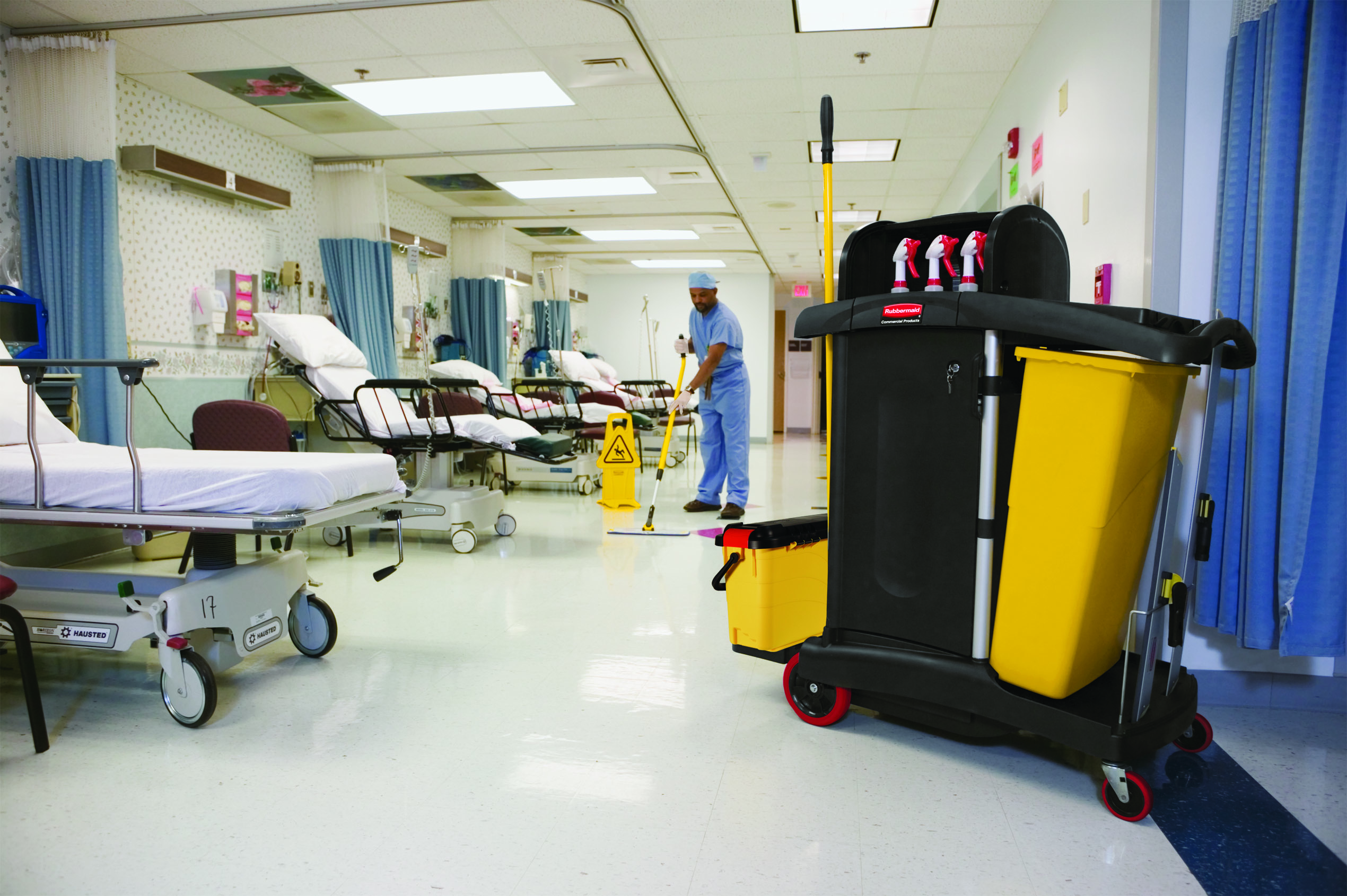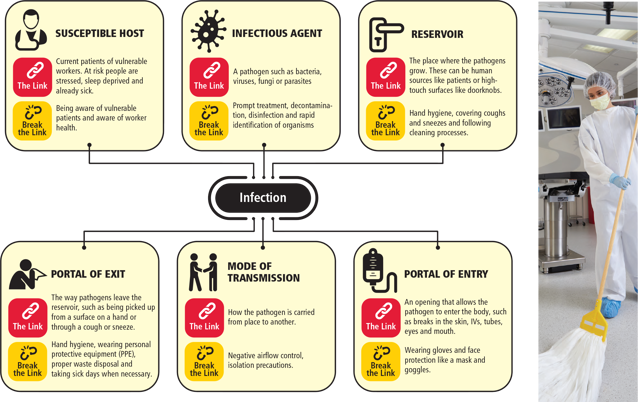
Proper care of cleaning equipment is essential to preventing healthcare-associated infections (HAIs).

Every year, 165,000 HAIs occur at Australian hospitals, resulting in an extra 380,000 hospital bed days and millions of dollars in additional costs. They are a huge threat to patient safety, but are often preventable with proper cleaning.
Hospital stakeholders need to understand how to effectively clean not only medical equipment and facility surfaces, but also the cleaning equipment itself. Attentive cleaning procedures reduce the risk of cleaning staff spreading bacteria and other infectants throughout healthcare facilities.
Understanding the chain of infection

Healthcare facilities are in constant flux. Patients move in and out of rooms, visitors come and go, medical workers circulate through buildings and cleaning staff make rounds through all areas of the facility.
All of this movement makes it easier for infections to spread from place to place and person to person. The chain of infection follows a familiar pattern:
Breaking the chain of infection requires key interventions at each stage of the cycle
So where does cleaning equipment fit into this cycle?
At the reservoir and portal of exit stages, cleaning staff have the responsibility to eliminate pathogens. However, staff also need to ensure that they do not become sources of transmission themselves.
Cleaning and storing hospital cleaning equipment
When cleaning equipment is used to clean areas where pathogens are present, they may become a new source of contamination.
For instance, if a staff member uses a wet mop to clean a floor and then places the mop in cleaning solution, the solution itself may become infected. Maintaining cleaning equipment is essential to stopping the spread of HAIs.
Sanitising cleaning equipment
Any equipment that comes in contact with pathogen reservoirs - surfaces like floors and door handles - should be cleaned after each use. For example, cleaning clothes should be laundered under high heat to kill bacteria and similar pathogens. Many healthcare facilities are switching to disposable microfibre systems to reduce the risks associated with multi-use products.
Wet mops are a common source of infection. Staff members may clean an area of the floor and then accidentally touch a damp part of the mop, potentially spreading pathogens to their hands and clothes. Professional microfibre mop kits can eliminate the need to liquid cleaning chemicals.
In addition, switching biohazard spill mops further reduces the risk of spreading pathogens. Unlike regular mops, innovative spill mop pads are designed to absorb bodily fluids and turn them into a gel to prevent dripping. The entire mop head can then be disposed of in a biohazard receptacle.
Storing cleaning equipment
Cleaning equipment should always be stored in dry areas away from patients and other people. Limiting access to cleaning supplies ensures that only authorised staff members use them.
Storing cleaning supplies in designated caddies keeps everything separated. For instance, cleaning clothes should never come in contact with mopping equipment. Using racks and shelves to keep supplies apart reduces the chance that pathogens will move from one item to another.
Staff members should maintain up-to-date inventory lists for each supply closet. Expired products should be removed promptly. In addition, the supply closet itself should be cleaned regularly. For example, if products drip on the floor, the spill should be cleaned immediately.
Breaking the chain of infection with proper cleaning procedures helps keep patients safe and reduces unnecessary healthcare costs. Maintaining cleaning equipment with the latest best practices can stop the spread of HAIs.
To learn more about the latest innovations in cleaning solutions, check out what Rubbermaid Commercial Products has to offer.